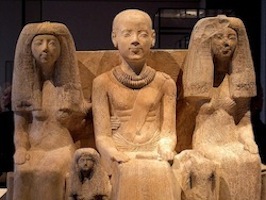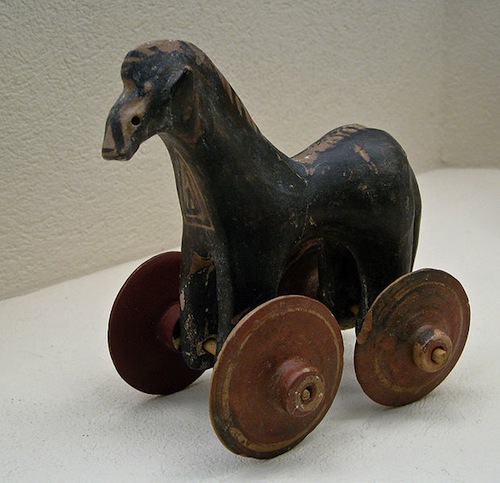Letter Writing In The Ancient World

Since
the beginning of man, people have always wanted to communicate. And they
wanted to communicate important things in their lives. The prehistoric
cave drawings in Altimira in Spain and Lascaux in France cry out the
lives and the being of those extremely remote people. The hands on the
walls say, “I did this drawing. I was here. I existed. And I managed to
survive by my wit, my mind, by hunting and killing animals many times my
size. And this is how I did it. And I express how I did it through
communicating the important things in my life with my hands.”
Thousands of years after prehistoric
cave men, people were still communicating through their hands the
important events in their lives through letters written on papyrus
rather than through drawings on cave walls. By the Greco-Roman times,
there was a formula for letter writing taught in all Greek and Roman
schools. It began with an introduction of the writer and the identity
of the recipient. There was a short greeting and often a thanksgiving
for health or safety. The author then presented the main body of the
letter and would conclude with wishes for good health and a farewell.
Here’s a potpourri of letters written by people in the first to third
centuries of the Christian faith:

Hilarion was the husband of pregnant
Alis and had apparently gone to Alexandria where there was work and he
would be able to send some money home. Obviously the child he mentions
was a boy of theirs. He tells her to kill or abandon on the garbage a
girl if she has one, but to keep the male child. Abortion and newborn
abandonment were common in the ancient pagan world. Alis worried that
Hilarion would “forget her” in Alexandria and he reassures her he won’t.

The god
Serapis was created by Ptolemy I, a Greek ruler of Egypt, in the 3rd
century BC in order to unite both the Egyptians and the Greeks. Serapis
had a human head rather than the typical Egyptian animal head because
Greeks always gave their gods human forms. The mother is named Serapis
like the god and invokes that god to keep her children healthy. She is a
loving mother who is beside herself with joy when a letter arrives from
her children, as was their nurse and their tutor.


This rather unloving and chiding letter
from older sisters to their two younger sisters is a universal one of
older siblings lording it over the younger ones: light the lamp in the
shrine to the gods; shake the dust off all the cushions; keep studying;
don’t worry about Mother; don’t play in the courtyard where people will
see your offensive behavior; behave yourselves when you are outside the
house; take care of Titoas and Spharus (maybe dogs?). And not even a
Farewell!

Diogenis’
brother Aurelius had instructed (his friend?) Taamois to find a house
for his sister and family. They had apparently settled on a house at one
time but instead they had moved next to Agathinos. Now they have bought
the original house that is near the precinct of Isis (a goddess and her
temple) and close to Claudianus’ home. They will move into the house in
the winter month of Phamenoth. Diogenis wants her brother to know that
Serapiacos should have delivered the purple dye she sent him. And she
delivered to Bolphios the letter he sent her to give to him. “Little
Theon” is probably her brother’s child, Diogenis’ nephew, and she is
pleased to say the eight toys for Theon have arrived at their home and
she is sending them to him with this letter. This is a real estate and
“things” (purple dye, toys) letter from a sister to her brother who are
both well-off enough to buy houses and things.
Letter
home to his father Epimachos from a young recruit named Apion from
Egypt who had enlisted in the Roman Army in the 2nd century AD.


Because the letter has no mention of his
mother, she was probably dead. Apion enlisted in the Roman army at
Alexandria, got on a big Roman government ship filled with Egyptian
recruits and sailed to Italy. The ship made it through a terrible storm
and arrived at Misenum where he was to be trained. Apion received three
gold pieces to tide him over and to get to his base once he was trained.
He thanks his father for bringing him up well and giving him the
education that will enable him to move up the military ranks. There
were obviously portrait-painters employed by the Roman army who would
for a fee paint a papyrus picture of the new recruit to send back home
to his family. His friend Euktemon is going to deliver the letter to
Apion’s family and give them the portrait of their Roman army son. And
he proudly tells his father his new Roman name that would replace his
Greek name, as was the custom in the Roman army. But you rarely hear the
words, “I love you,” in ancient Greco-Roman writings or, for that
matter, in some cultures on our planet today.—Sandra Sweeny Silver






Δεν υπάρχουν σχόλια:
Δημοσίευση σχολίου